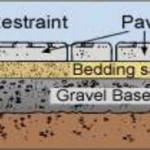How Much Bedding To Put In A Hamster Cage: A Comprehensive Guide
Providing your furry friend with adequate bedding is a crucial aspect of responsible hamster care. Bedding serves various purposes, including creating a cozy nesting place, absorbing moisture, and providing a substrate for digging and burrowing, stimulating natural behaviors.
Factors to Consider When Choosing the Amount of Bedding
The appropriate amount of bedding depends on several factors:
- Hamster Species: Different hamster species have varying bedding preferences based on their size and habits. For instance, Syrian hamsters tend to require more bedding than dwarf hamster breeds.
- Cage Size: The larger the cage, the more bedding you'll need to provide ample space for digging and nesting.
- Behavior: Some hamsters are avid diggers and burrowers, requiring a deeper layer of bedding to accommodate their activities.
- Bedding Type: Different types of bedding have unique properties, influencing the amount you need. For example, paper-based bedding tends to compress more than wood shavings, requiring a deeper layer.
General Guidelines for Bedding Depth
While the optimal bedding depth may vary slightly based on your hamster's individual needs, here are general guidelines to follow:
- Dwarf Hamsters (e.g., Roborovski, Campbell's): Aim for a bedding depth of 2-3 inches (5-7.6 cm) to provide sufficient space for digging and nesting.
- Syrian Hamsters: Syrian hamsters, being larger, require a bedding depth of 6-8 inches (15.2-20.3 cm) to satisfy their digging and nesting instincts.
Benefits of Adequate Bedding Depth
Providing the right amount of bedding offers several advantages:
- Nesting Comfort: Adequate bedding allows your hamster to create a cozy, warm nest, mimicking its natural habitat.
- Digging and Burrowing: Hamsters are natural burrowers. Ample bedding facilitates this instinctual behavior, helping prevent boredom and promoting mental stimulation.
- Moisture Absorption: Bedding absorbs urine and feces, keeping the cage cleaner and drier, improving overall hygiene.
- Odor Control: Adequate bedding helps control odors by absorbing ammonia from urine, maintaining a fresher environment for your pet and you.
Tips for Maintaining Proper Bedding Depth
- Regular Spot Cleaning: Regularly remove soiled bedding, especially around areas where your hamster urinates or defecates, to prevent odor buildup and maintain a healthy environment.
- Partial Bedding Changes: Every 1-2 weeks, perform partial bedding changes, removing approximately one-third of the old bedding and replacing it with fresh bedding. This helps maintain an appropriate bedding depth and prevents the buildup of waste and odors.
- Complete Bedding Changes: Every 4-6 weeks, conduct a complete bedding change, removing all the old bedding and thoroughly cleaning the cage before refilling it with fresh bedding. This ensures optimal hygiene and prevents bacteria accumulation.
Conclusion
Providing the right amount of bedding is essential for your hamster's well-being. Consider your hamster's species, cage size, behavior, and the type of bedding when determining the appropriate depth. By maintaining a suitable bedding depth and following proper maintenance practices, you can ensure your hamster has a comfortable and healthy living environment.

Cleaning A Hamster Cage How Often And To Do It Right

Safe Hamster Bedding Society Singapore

Bedding And Hideout For Your Hamster Care Cleaning

Pin On How To
Safe Hamster Bedding Society Singapore

What Do You Need For A Hamster Supreme Petfoods

Safe Hamster Bedding Society Singapore

Hamster Cage Setup Make An Enriching Home For Your Pet

How To Care For Your Hamster Petmd

Safe Hamster Bedding Society Singapore
Related Posts








